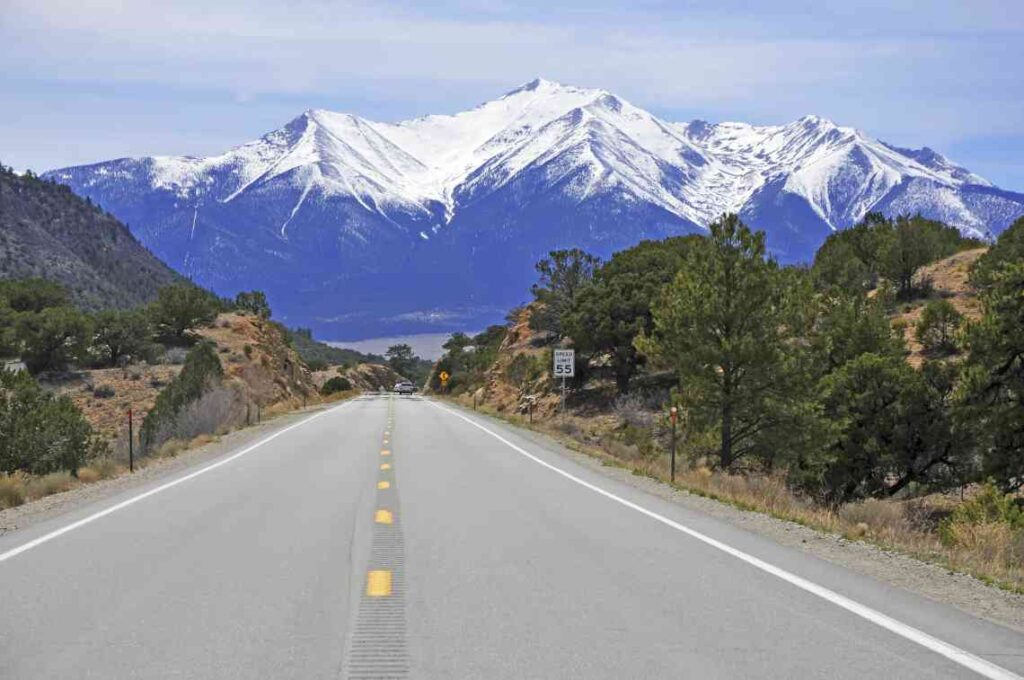There are some general rules and regulations you should be aware of before driving in Colorado. That way you can navigate the Rocky Mountain state safely, avoiding fines and offenses. Colorado’s rugged landscape often calls for changes in driving behavior due to the winding mountain roads changing weather conditions at high altitudes. Though many traffic laws are similar in most areas, every US state has its own set of laws that can vary dramatically.
General Rules and Regulations
- If your vehicle is equipped with seatbelts you must wear them at all times. Seatbelts are required for passengers 8-16 years old, while children under 8 must be seated in an appropriately sized safety seat.
- Unless trying to reach emergency services, texting while driving is forbidden and no form of mobile phone use is permitted for drivers under 18 years of age.
- You must adhere to the 3-second rule, leaving this amount of distance between your vehicle and the vehicle in front.
- Drivers should always yield to the right of way to buses that are indicating and re-entering traffic.
- Drivers must yield to pedestrians if not doing so is likely to result in accident or injury.
- Drivers can be charged for aggressive driving if they are make any dangerous actions that put another driver, or pedestrian, in danger.
- The blood alcohol limit is just 0.05% and a DWI offense can result in large fines, public service and even jail time.

Speed Limits in Colorado
There are general speed limits given for Colorado, but be sure to adhere to the speed limit signs wherever you are driving; the limit will likely vary on mountain roads. With it’s steep inclines and winding curves, the Rocky Mountains section of Interstate 70 has a maximum speed limit of 65 mph.
| Narrow mountain roads | 20 mph |
| Business districts | 25 mph |
| Residential districts | 30 mph |
| Rural highways | 55-65 mph |
| Interstate highways | 65-75 mph |
Turning & Parking
In Colorado it is illegal to make U-turns at intersections with traffic signals or that are controlled by police officers. It is also forbidden to make U-turns on interstate highways with 2-4 lanes. It is usually signposted in other areas where U-turns are prohibited. If you must perform a U-turn, be sure not to obstruct the flow of traffic.
Parking laws are designed to stop the obstruction of access to private property, workers and service vehicles and for your general safety. While some laws seem like common sense, such as not parking on a railroad crossing, there are many instances where it is not so obvious. In Colorado there are also various distances you must observe when parking:
- Do not park within 5 feet of a driveway.
- Do not park within 15 feet of a fire hydrant.
- Do not park within 50 feet of a railroad crossing.
- Do not park within 30 feet of a traffic signal, flashing beacon or yield sign.
- Do not park within 20 feet of a fire station driveway.
Car Rental with SIXT in Denver
You can rent a car from Denver Airport (DEN), our prime location which is just a 30-minute drive from downtown Denver and a 1h 30m drive to the Rocky Mountain National Park. As a tourist destination Denver was formerly known for being a gateway to the Rocky Mountains. More recently its booming arts and culinary scene is transforming the city into a popular destination in its own right. Check out Santa Fe and the Golden Triangle for the arts and theater, Lower Downtown for upmarket bars and restaurants and South Broadway for excellent live music.
Colorado’s dramatic scenery is still a major attraction and you have a great range of parks to explore within easy reach of Denver. Rocky Mountain National Park offers extraordinary hiking and camping and the mountain scenery is majestic. Colorado also has an impressive array of ski resorts like the popular ones in Vail and Breckenridge. For a spectacular scenic drive we highly recommend the Million Dollar Highway on the San Juan Skyway Scenic Byway starting in Durango.